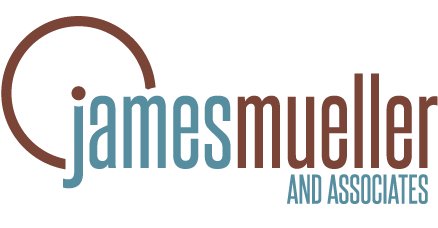Strategic Planning is a Venn Diagram, Not a Linear Process
Previously Posted on Bloomerang.com Blog,© James Mueller, March 2017
The winds of change can blow harshly. And in today’s environment, change can come rapidly and unexpectedly. So, what’s the point of strategic planning?
First off, there is a difference between having a plan and having an effective planning process. Dwight Eisenhower said, “In preparing for battle I have always found that plans are useless, but planning is indispensable.” Mike Tyson was equally terse when he said, “Everybody has a plan until they get punched in the face.” As Tyson explained to Mike Berardino of the Sun Sentinel in November 2012, “People were asking me [before a fight], ‘What’s going to happen?,’ They were talking about his style. ‘He’s going to give you a lot of lateral movement. He’s going to move, he’s going to dance. He’s going to do this, do that.’ I said, ‘Everybody has a plan until they get hit. Then, like a rat, they stop in fear and freeze.’”
The purpose of an effective planning process is to deeply understand your organization, to develop sound strategy, and understand your purpose in the context of the community you serve. An effective planning process never leads you to a place where you have such narrow options that you freeze in a crisis. It’s just the opposite.
Strategic planning is not a linear process. It is more of a Venn diagram with each element in conversation with the other, and through this interactive process an overall understanding of the best strategy evolves and gains clarity.
So, what are those interacting elements?
- Your noble cause: the values the organization anchors in the world, the beliefs, principles, philosophies that calls it to do a great work; the vision for a better world for those you serve; and the mission you pursue to get there
- The environmental context: constituent needs and expectations, competitors and collaborators, trends in the field, critical issues in your immediate environment, and organizational realities (staff, budget, current programs, leadership)
- Your value proposition and core competencies
- Strategic imperatives and a plan of action with success metrics
Everybody has a plan until they get punched in the face. —Mike Tyson
Your Noble Cause
Core values call an organization to do its work. They capture the beliefs in which it is rooted—what it embodies and anchors in the world. Core values throw into sharp contrast the gaps between what is and what should be. They are distinctive to the organization and differentiate it from its competitors and collaborators. When members of an organization’s leadership and management team understand its defining and distinctive values, they gain greater clarity about how to make decisions and how to consistently convert resources into the most appropriate actions. Core values must be authentic.
In the simplest terms, a vision describes how the world will be different for your constituents because your organization exists. It is the ideal state toward which the organization strives on their behalf. It is seeing something with the imagination that does not yet exist. It ignites passion and inspires people to act. Compelling visions are often a bit audacious, capturing a future state that is larger than current capabilities—opening up a range of possibilities that transcend short-term thinking.
By contrast, some organizations use vision statements to define how they will succeed in terms of organizational aspirations, using “to be the best” language. The result is just an organizational goal, not a transformative vision. A true vision articulates how the lives of those you serve will be transformed. It must be authentic, relevant, crisp, clear, and memorable.
An effective mission is focused on aim and impact. It describes what the organization does for its constituents, and to what end (i.e. impact on their best interests). An effective mission statement gives direction to the organization’s intentions, defines its work, and states what it will do in clear and compelling language that makes sense to anyone who reads it. And it’s memorable. The mission pursues the vision in the clearest, most fundamental language. Complex mission statements often confound people—or in the least, fail to resonate with them in a persuasive way. In a mission statement, less is often more.
These three elements of an organization’s noble cause—core values, vision, and mission—form the foundation of strategic planning. Because once you fully think them through, you know where you stand in any situation.
The Environmental Context
Every organization functions within a community of interacting entities and individuals. A well designed environmental scan provides a sound understanding of the expectations of those who interact with you, the trends that are emerging in your field, the critical issues in your immediate environment, and organizational realities and constraints you are facing as you interact with this community. The environmental scan must ask good questions and the right questions.
For example, some good questions might include:
- Who are our constituents? Do we really know what they need and expect?
- How about our donors? Have we involved them in our planning?
- Who are our competitors and collaborators? In what distinctive ways are they serving our community? What are their strengths and advantages? What are the key reasons for their success? Do we have emerging competitors/collaborators that are using new or unique approaches?
- How is our field evolving and changing? What are the trends in the field that are shaping the future? Are these trends changing the rules of success? What are the threats and opportunities?
- What are the internal challenges and constraints that impact our ability to succeed? What are the impediments to change that need to be addressed? What are our strengths that we can leverage?
- Finally, what is going on economically, socially, demographically, technologically, governmentally that impacts our ability to succeed?
Knowing this information gives an organization a sound footing—even when operating on shifting sands.
Your Value Proposition and Core Competencies
Your value proposition is your promise to those you serve. I often begin with the value proposition and build it into a case for financial support. In order to have a plan, you must know the space you own and the promises you can keep. My favorite definition of the value proposition comes from Willie Pietersen, Professor of the Practice of Management at Columbia School of Management: “What will we do differently or better than our competitors to provide greater value to our chosen customers and superior profits for our organization?” Though we don’t seek profit in the nonprofit sector, healthy reserves are important to sustain—and so is resource flow. You must think about the funding sources when planning. And while we encourage collaboration, we still must know what we do differently and better than anyone else to provide greater value to those we serve. If we cannot articulate and defend our value proposition, why are we in business? Why should people donate to our cause?
Core competencies are the capabilities needed to deliver the promise of our value proposition. Every organization must identify the competencies that are required to succeed. This entails an honest, objective look at the ones you possess and the ones you must develop or acquire.
Knowing your promise and being competent to deliver it positions your organization for success.
Strategic Imperatives and an Action Plan

When crafting strategic imperatives, one looks out to the horizon—whether 3, 5, 10 years… or more, and engages the imagination with courage.
Strategic imperatives are clearly defined outcomes essential for an organization to achieve its vision. They are “must-have” achievements that create a substantially different reality. All organizational goals, activities, and success measures must serve the strategic imperatives.
When crafting the imperatives, one looks out to the horizon—whether 3, 5, 10 years… or more, and engages the imagination with courage. The purpose is to craft three to five transformational outcomes that the whole organization pursues with vigor. When committing to a set of imperatives, it is important to use a process that engages everyone throughout the organization, so that all buy-in and pledge their support. As someone recently commented, “They should scare you a little and excite you a lot.”
I recommend action plans that allow flexibility because in our fast-paced, rapidly changing environment, organizations should remain adaptable while keeping their eyes on the prize: delivering their value proposition to their constituents. Goals should contain both outcomes (a measure of change that is verifiable) and actions (activities that hold the greatest leverage for bringing about preferred change). Every organization should create a process of accountability where teams regularly review their effectiveness: Did we do what we said we’d do? If not, why not? Did we get what we hoped? Do we need to adapt? What will we do now?
Summary
As Eisenhower said, “planning is indispensable.” Strategic planning is the process of delving deeply with probing questions so that you understand your organization’s purpose and how you are going to solve the problems for the people you serve. When we take the time to strategically plan, we create an ability to succeed whether or not we take a punch to the face.


